Theo Verelst Local Diary Page 46
I've ditched the usual header for the
moment, I think it doesn't help much anyhow.
This page is copyrighted by me, and may be read and transfered by any
means only as a whole and including the references to me. I
guess thats normal.
This
page is under contruction, so check back later, too.
Fri Mar 25, 13:52, 2008
Software radio, what´s that
Well in essence a radio or TV tuner of which major parts work in
software instead of in hardware electronics, altough of course the
antenna and some important electronics like mixers and AD converters
are still essential, but the signal detection and a part of the
filtering is done in software, and even in programmable logic.
Because computers are getting so much faster and AD converters up to
high sampling rates so much better and cheaper, it can pay to do
software decoding of even live Analog to Digital converted signals,
using other methods than are available in must ´hardware´
radio´s electronic signal path. Not necessarily better, but for
instance for HAMs it is certainly interesting to change a radios´
reception method and experiment with various signal processing
possiblities, and some signal processing possibilities which are very
hard tomake in hardware or even impossible, like those requiring long
delays and for instance FFT based filtering and decoding loops.
A little ssb radio experiment for little radio amatures ? Ehm, no.
This example is made by somebody actually decoding High Definition
Television with a software radio setup!:
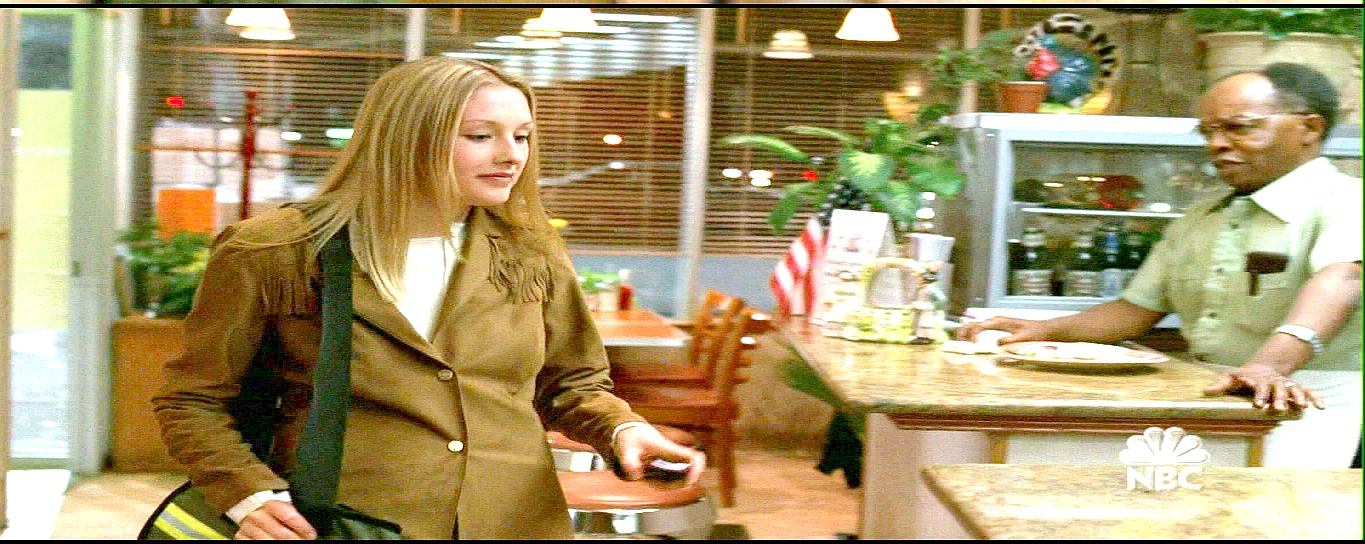
(I brighened the image, and shrunk it)
It comes from the gnuradio
site, where a wholly open source software radio setup is described even
with hardware with all the parts and pcbs available.
It is possible to internet-buy the hardware required for course tuning,
AD conversion and USB interfacing from Ettus
, see GettingStarted.
It isn´t that expensive for what it is, an probably the whole is
terribly cheap, but getting started with the hardware would cost apart
from a PC about $700 and then some. Otherwise I´d probably try
quickly to get acces to this and use the hardware also for oscilloscope
and spectrum analyser (that´s electronicist equipment)
Would that work? Well, I´d as it is probably need the Universal Software Radio Peripheral
to find out, but if I take the descriptions and independent user
reports I´d say it works. I think back about my idea of using 100
meter of coax cable (See local dairy page 25)
to make an interesting analog electronics string simulation (For which
I made advanced real time
simulation software as musical instrument simulation)
and honestly it would be cool to get satellite reception via a self
controllable tuner which could also get hd channels (I use a computer
for receiving mainly BBC, but it doesn´t get HD channels) and of
course if I´d have a licence, creating sat (HAM) signals would be
cool, or just taking two communicating discs and making them link with
low power.
I wonder what the actual quality of the decoded signal would be. I as a
teenager had built a found car radio wreck into an enclosure after
fixing and upgrading it, which acted as a tuner for years, and I was
very interested in signal quality of expensive tuners which were
available at the time. I don´t know what the sensitivity and
distortion figures of the software approach can be, but I guess having
digital delay lines and computation facilities makes things interesting.
I installed the gnuradio package from Redhat Fedora ( version
3.1.1-4.fc9, 64 bits ) which works for simple examples like the
testtone, I´m not sure it is the best way to dig in some
/var/share tree to find the examples, but it worked, I got audio as
supposed, and even from the right DA converter and setting the sampling
frequency was OK, too.
The FFT revisited
Made with Free and Open Source Software analog synthesizer simulation,
and LADSPA plugins on Linux (no windows was used at all for this music)
this piece of music (not crap) which is just testing some possibilities
features analog synth sounds with effects with actual synth sounds, not
some prefab samples. Remember Emerson Lake and Palmer doing Peter Gun ?
That´s much better, but this is fun, too.
smalltheme.mp3
(1.47 MB, 47 seconds)
smalltheme.wav
(8.1 MB, same music, 44.1 kHz 16 bits CD quality
uncompressed wav file)
smalltheme_jam.mp3
(1.44 MB, the same music but ´treated´ with Jamin, in mp3)
The last version has been fed through Jamin, the 32 band equalizer
program for Linux, with mulitband compression and loudifier.
Doesn´t sound better in my opinion, but some people like it.
Some work
I did some work in the household or ´klusjes´. Which is
dutch for chores but then in a bit condenscending fellow sense and
possibly with the connotation of being unofficial which is totally
irrelevant in this case, like computer guys repairing their
friends´ PCs at work, or when I used to work at university
with electronicists when ´jobs´ would be done at work or
otherwise which could also be paid activities.
If I´d pick up a magazine (which I do at times) and lets say
build an aquarium thermostat for the accurate heating of tropical fish,
and go out an buy some electronics parts to do that for aunty X, that
would not be a klusje, but if I´d be a plummer
´helping´ as unce Y to get some friends´ toilet fixed
up, and get a proverbial bottle of wine as reward, it is possible that
actually is a ´klus´. Enfin, who cares, I just remember
someone telling me when I was asked for another university job at the
time that it was supposed to be considered normal that the economy is
´greased´ with blackmail money. Huh?! I thought at the
time...
Well I built some stuff I also built long ago myself, and some new
things:
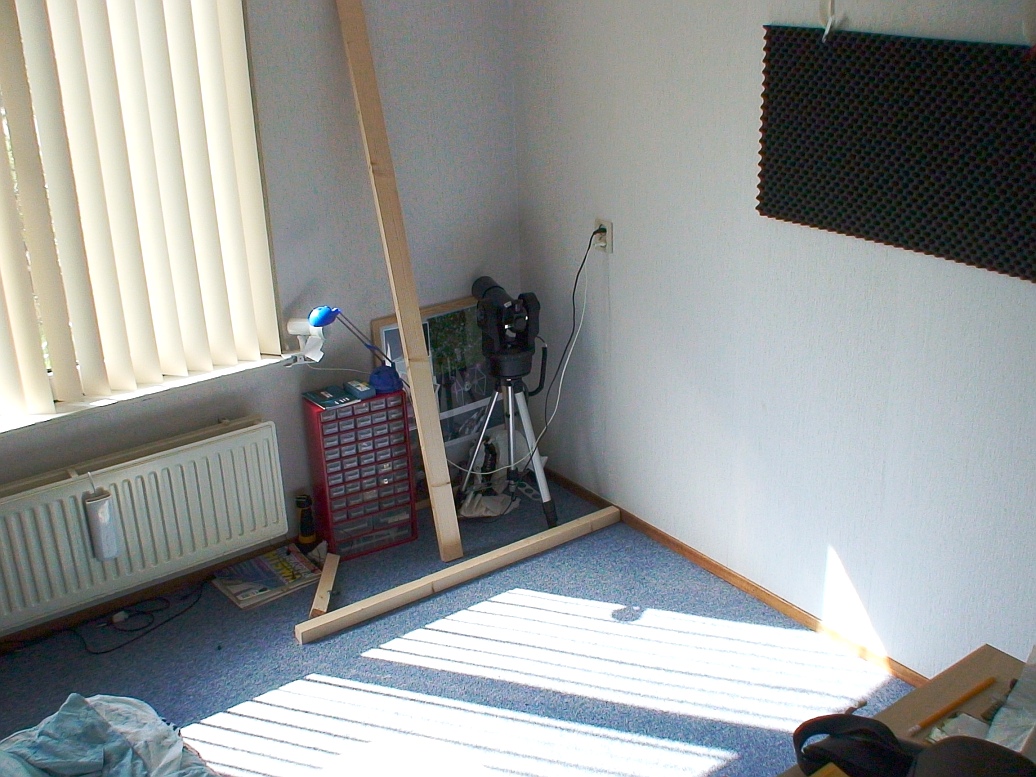
A carpet and vertical sunshields
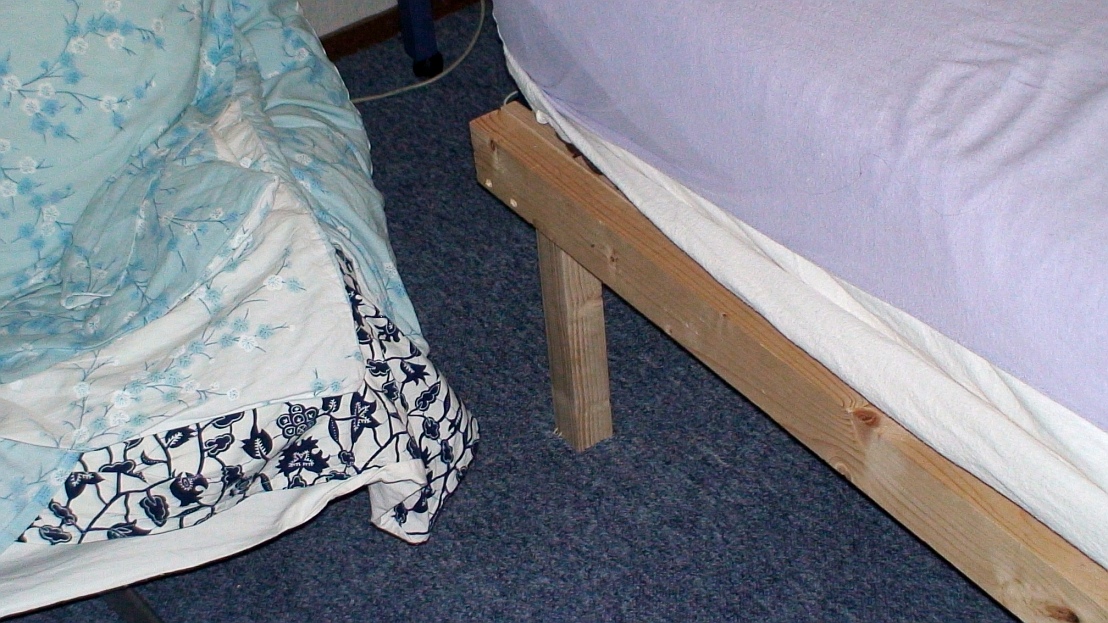
Another attempt to build some bed (I built my own when I was in my own
place which worked good for years). It´s not stable enough, so it
needs more woodwork to be used good.
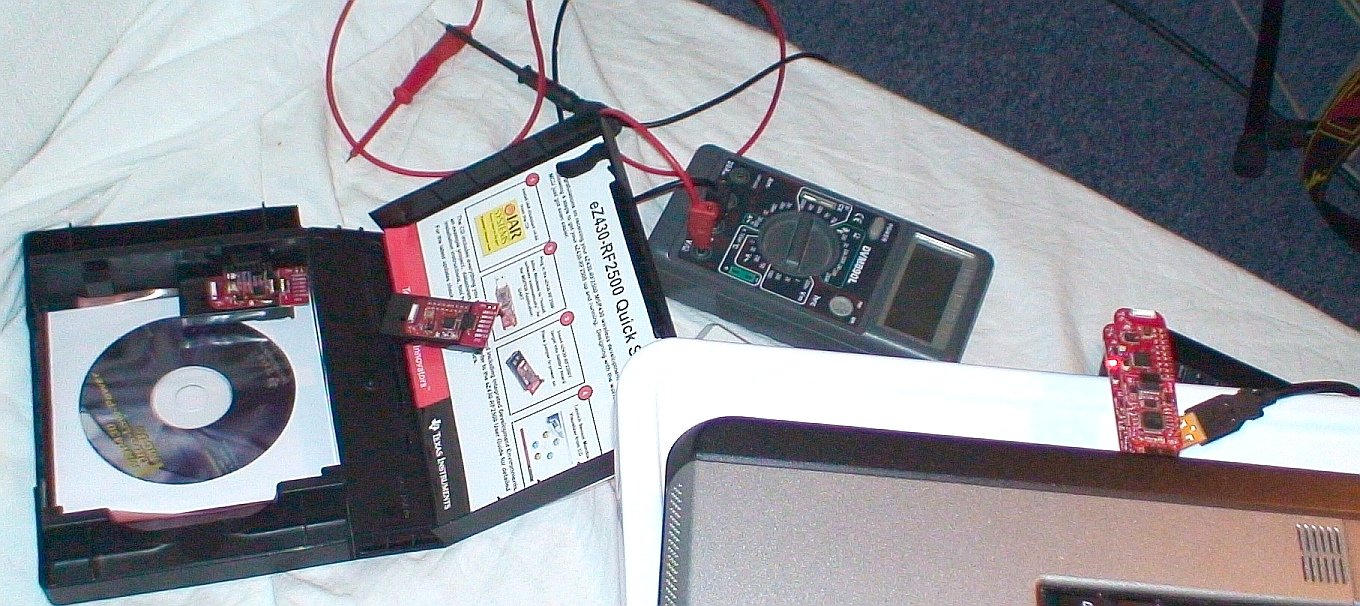
What´s all this ? That´s 4 Texas Instrument wireless
connected boards with MPS430 microprocessors on them all connected up,
basically to report battery voltage and temperature to the main
station. The red boards thast is, two are on the computer on the right
with USB connector board which supplies 3 volt to them, and also have
programmers for the two wire interface, and both have serial
connections, too, which I can read/write from tcl scripts.
Public use HD
some Chicago HD company:
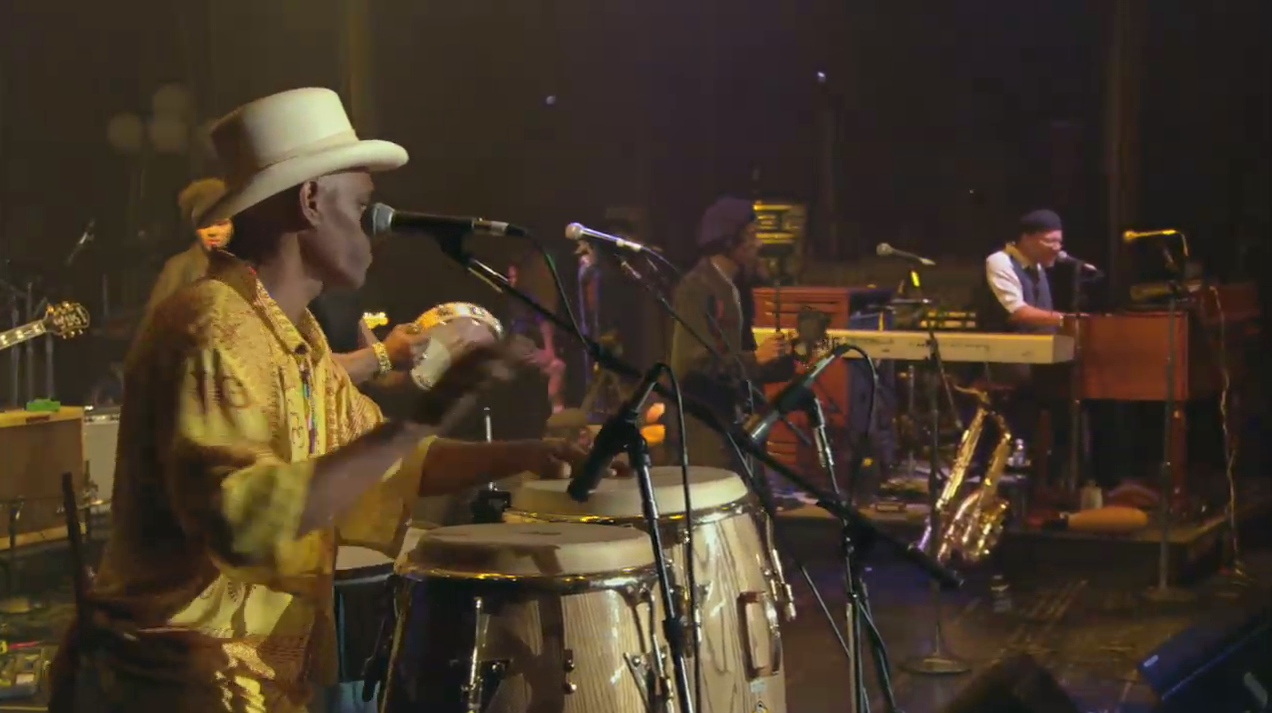
(great)


Adobe HD example:

An example froma Cinelerra HD demo source:
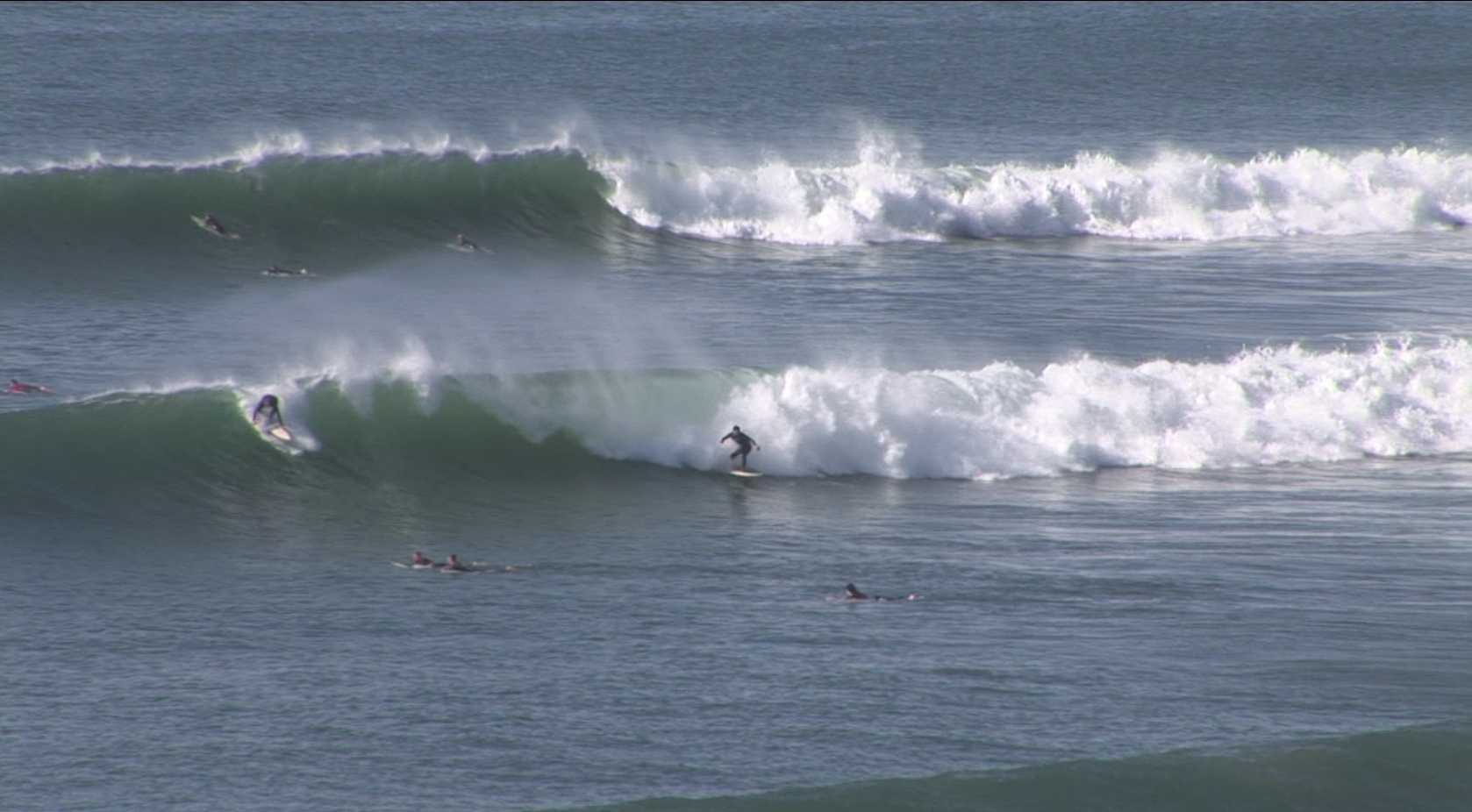
Some images grom my own HD footage (mind the motion effects and the
straight character):

Original format from a filmish saturated sun bathed scene:

Filmed in Amsterdam:
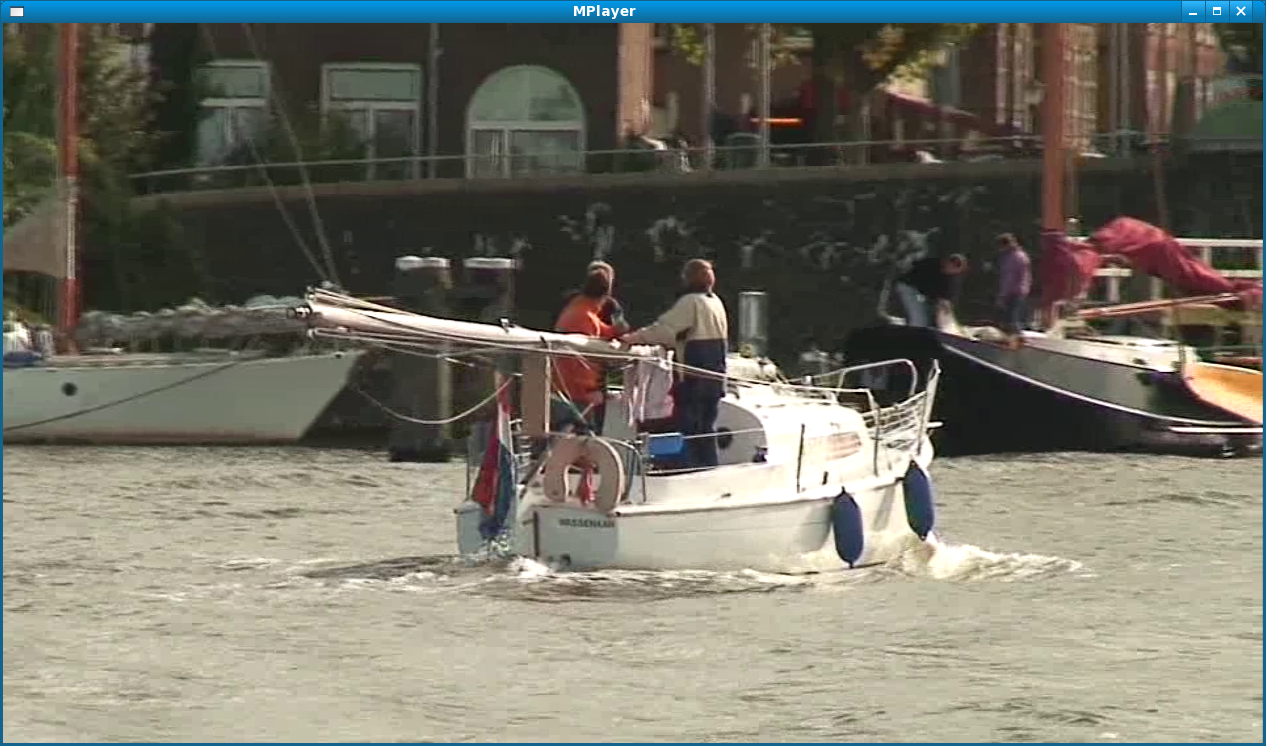
From the zoo Artis:
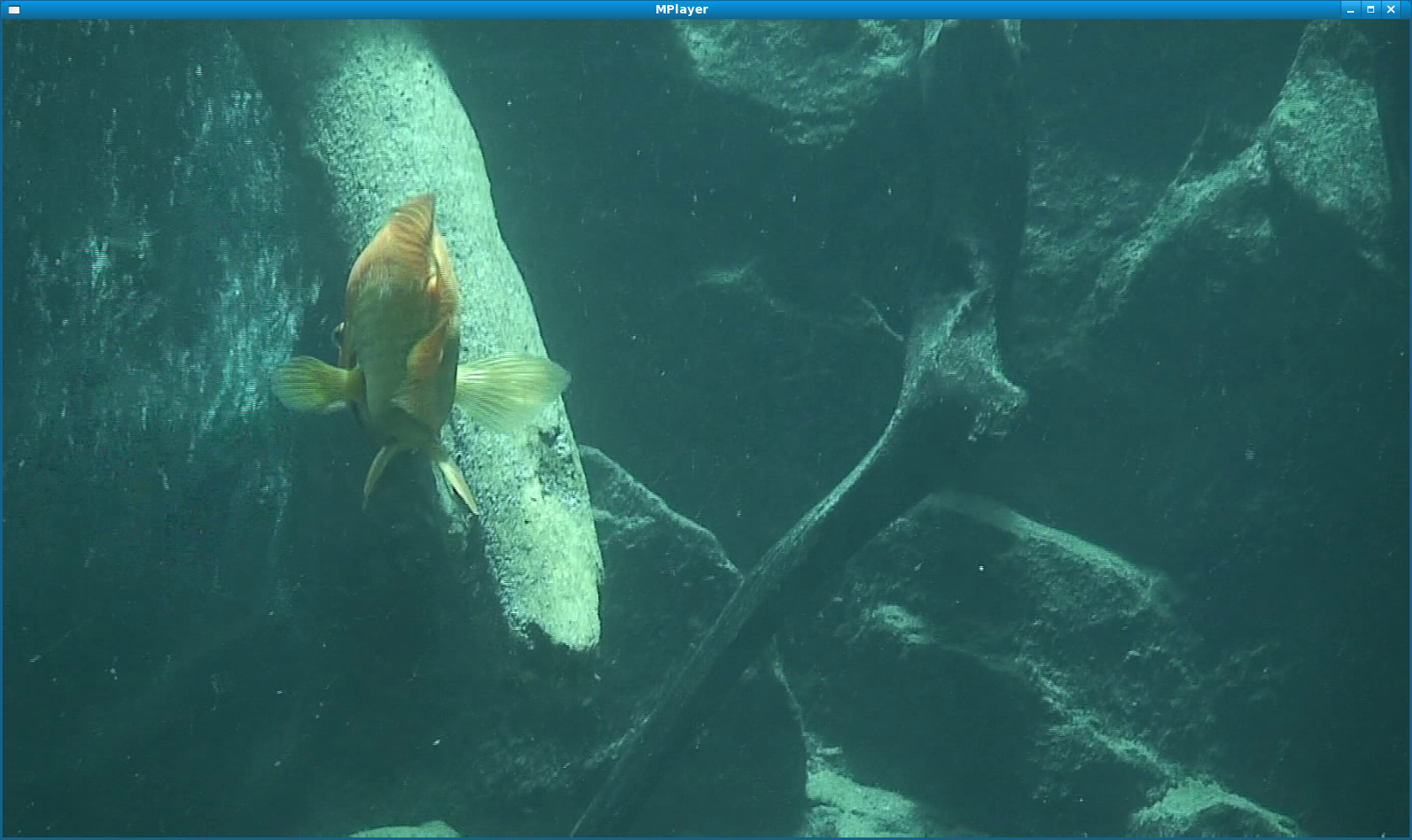
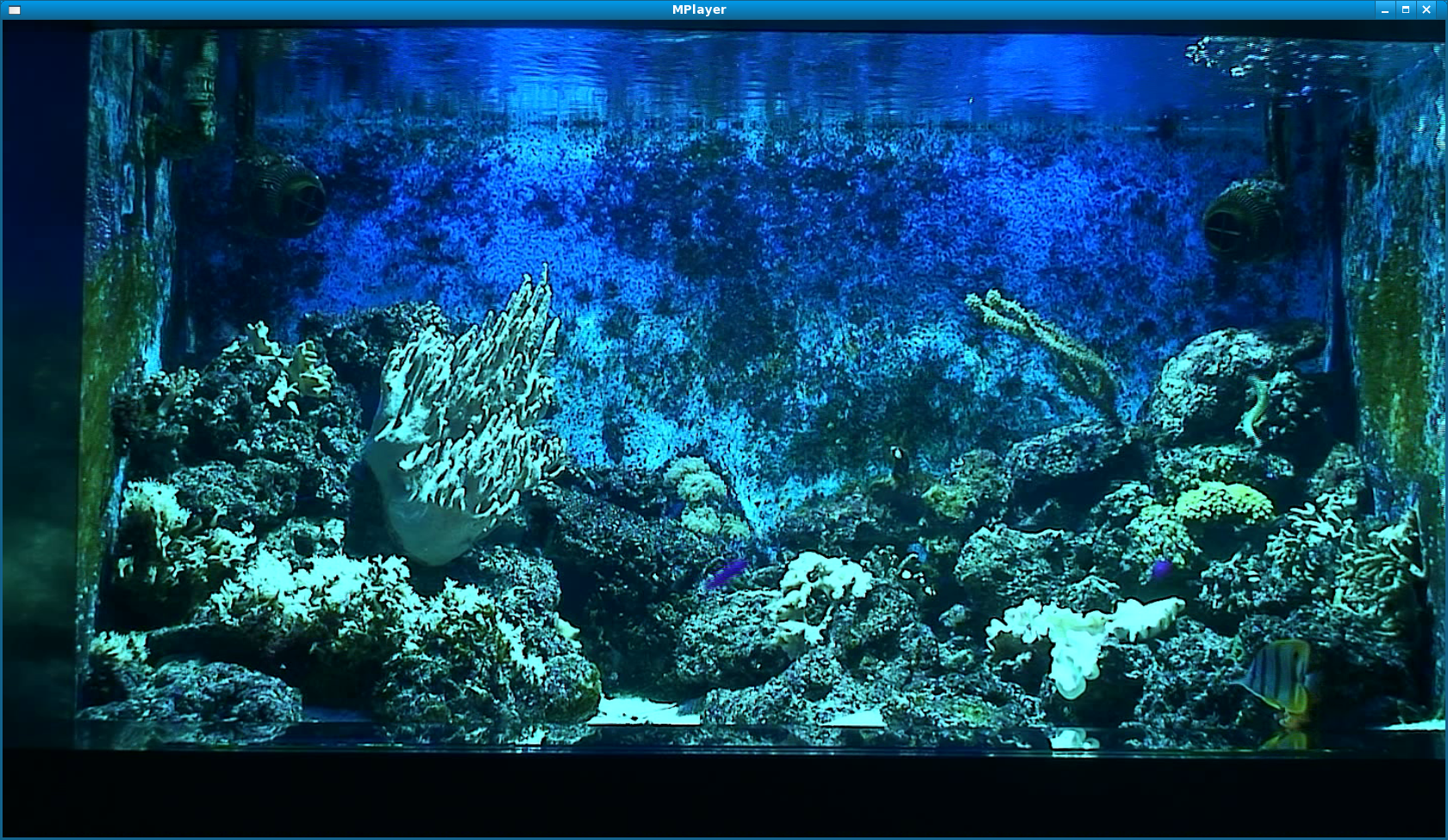
Near the sea:
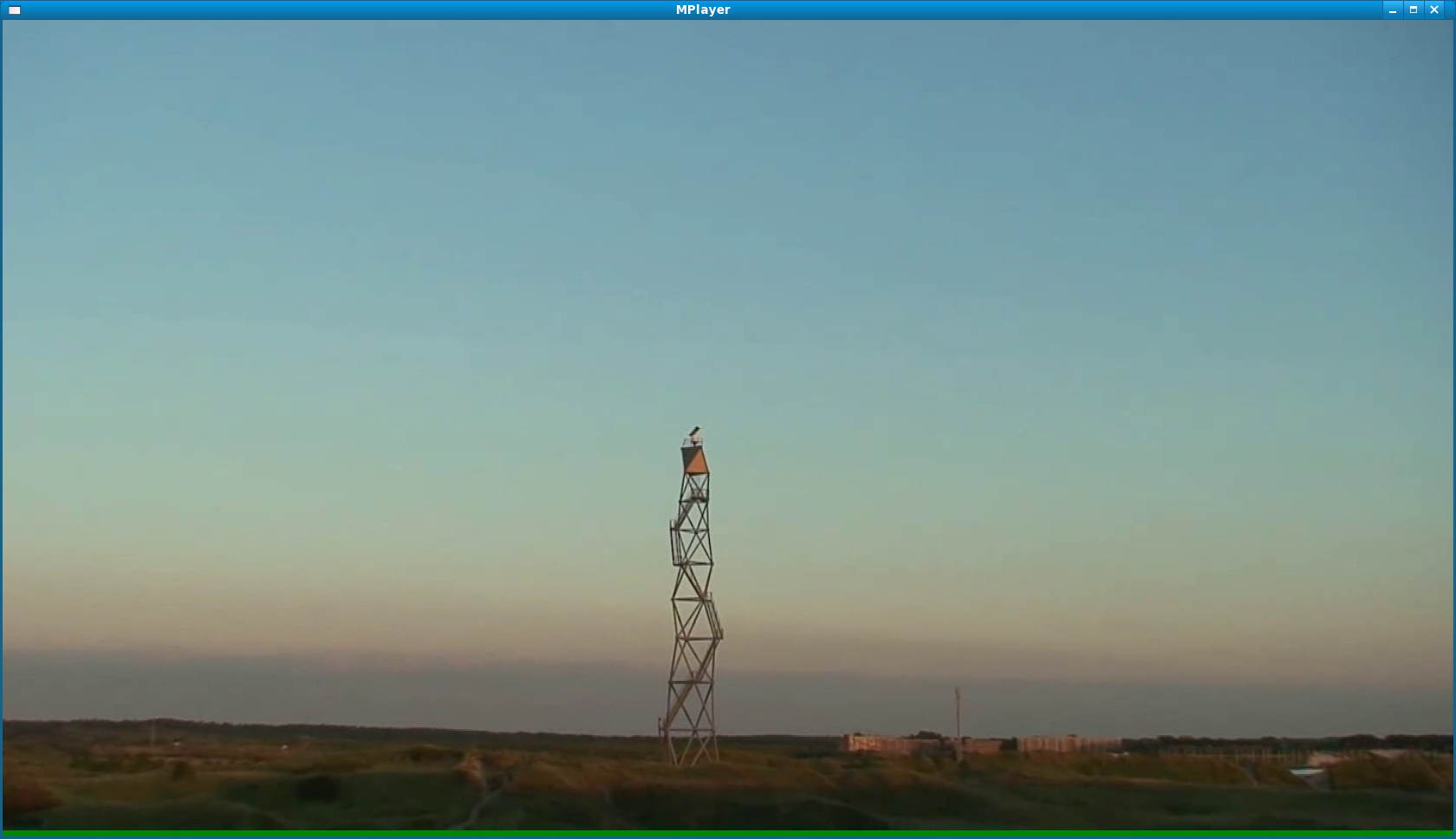
Scheveningen, from lower bandwidth encoded version:
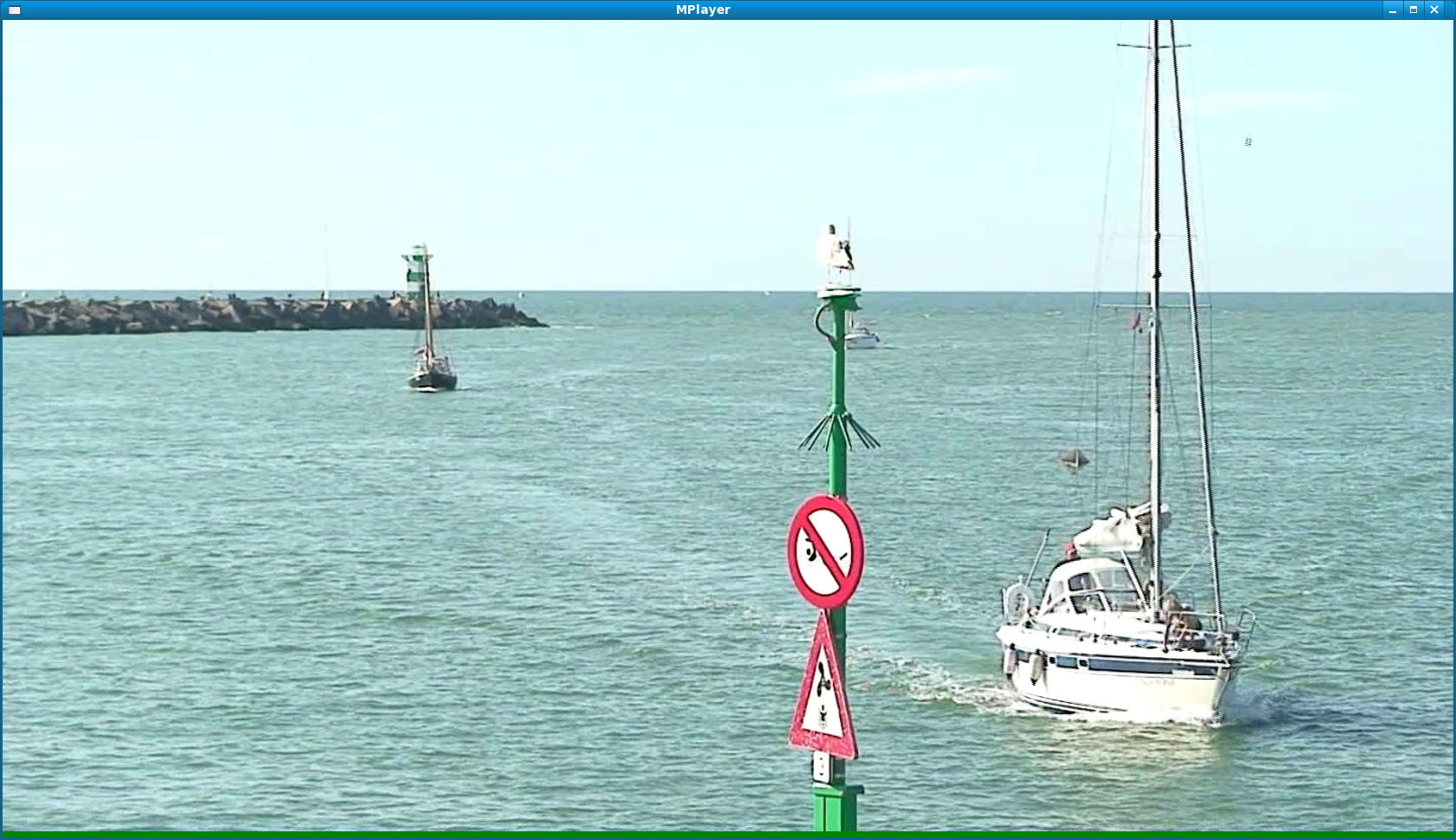
A recent snowfall filmed from behind glass:
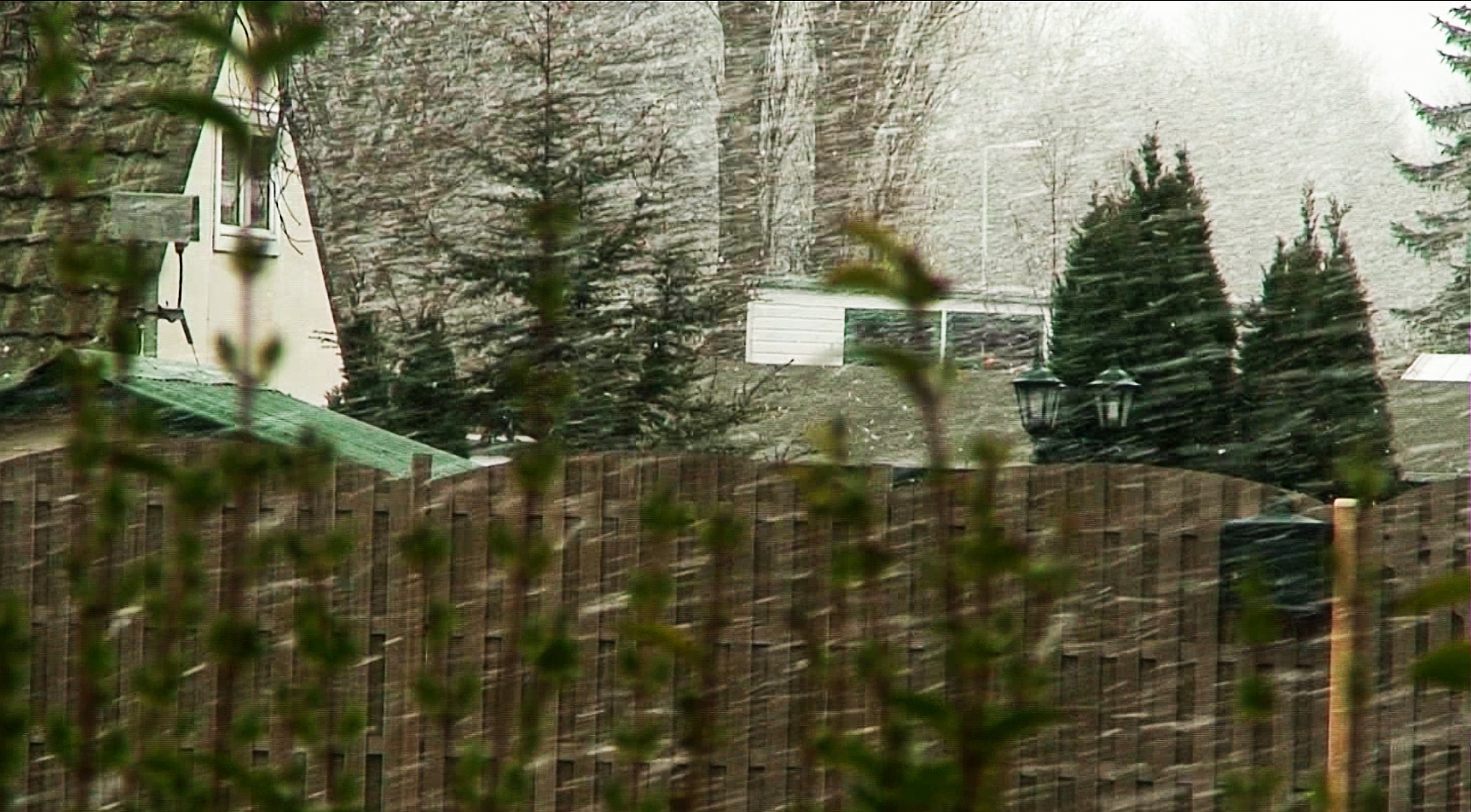
Yeah yeah, progress.
A place where I used to go as a teenager to sail in HD (screendump from
mplayer):
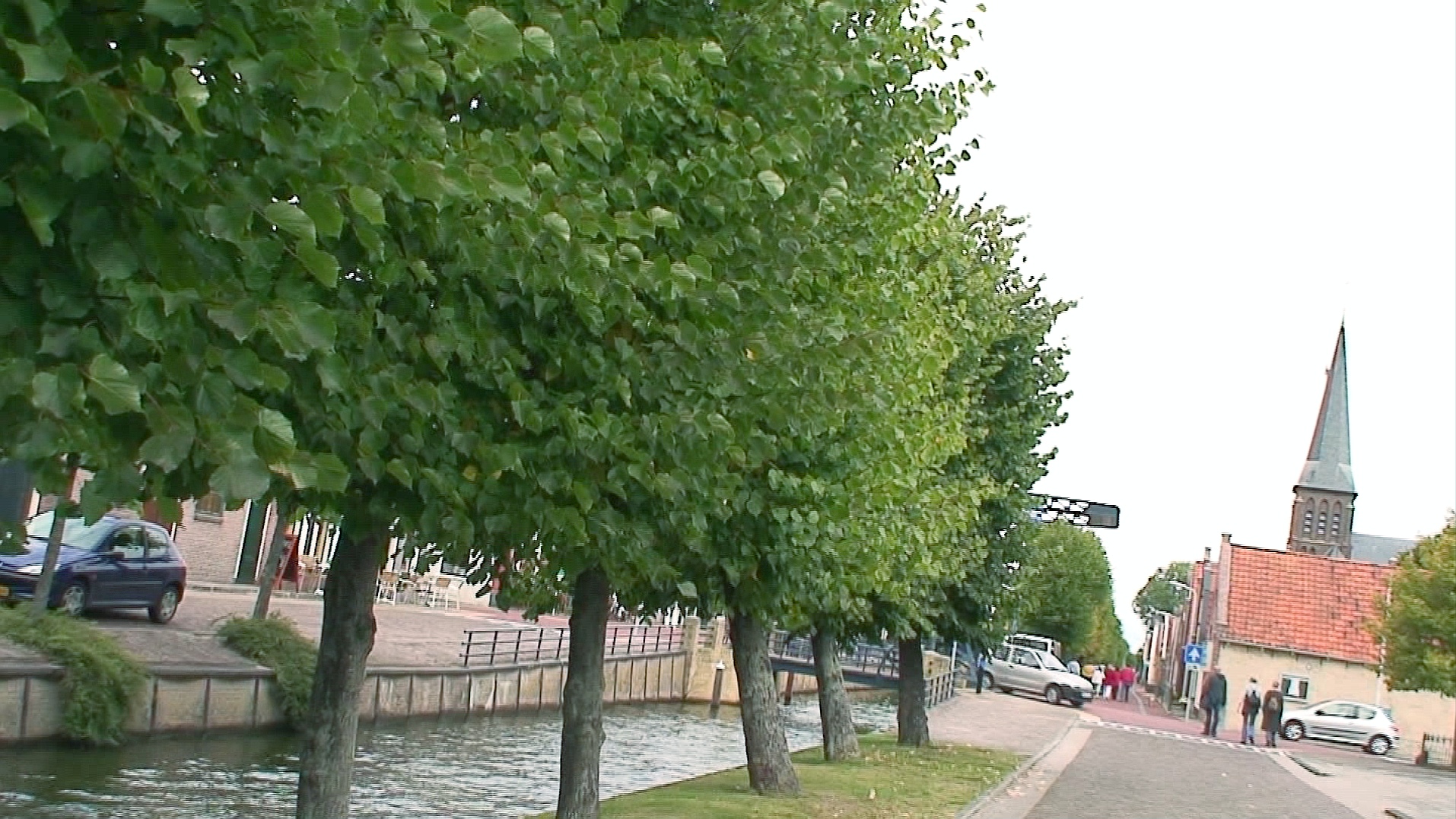
Would you know where that is ? This is a "dezoom":

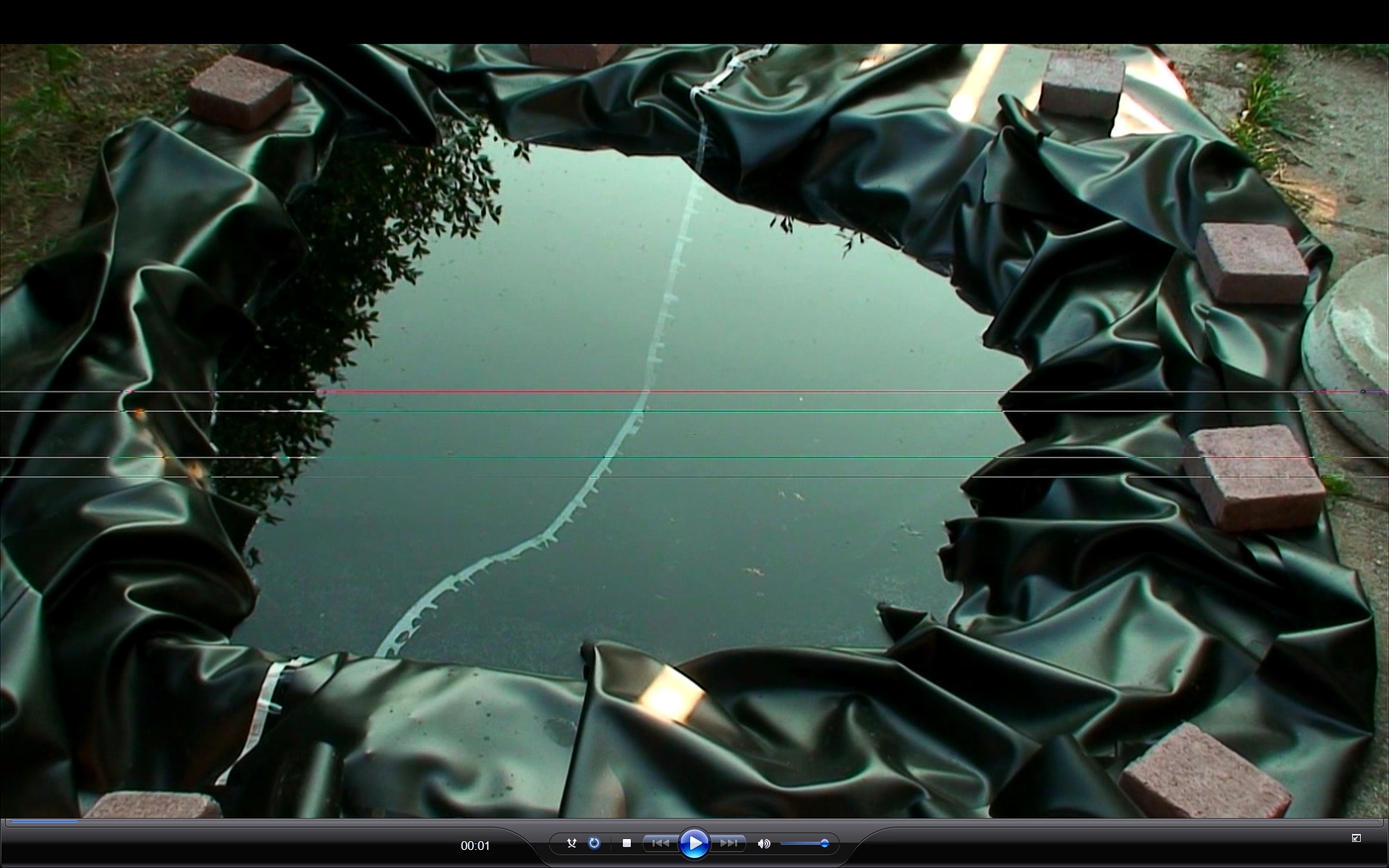
To get an idea of the results of my HD material being
crossconverted on the internet, see
http://www.vimeo.com/955386
My place on the vimeo site, where anyone can upload 500 MegaByte for
free in the form of video and 720p HD video (like mp4 mov etc.).
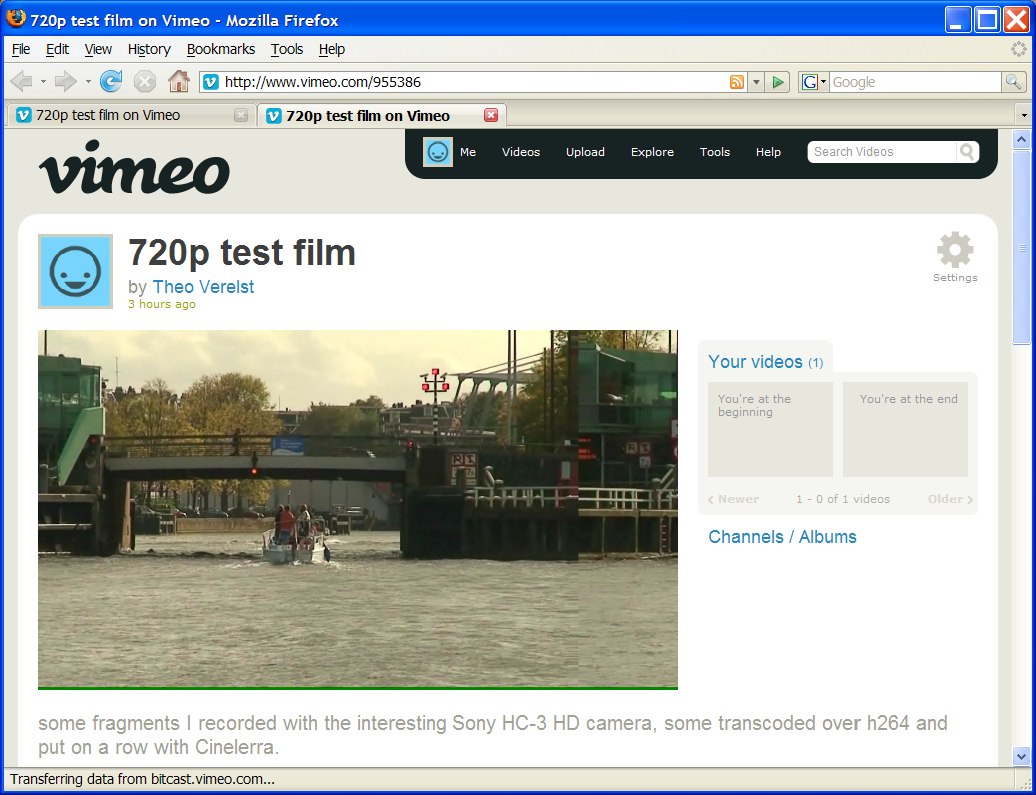
I uploaded 4 minutes of a selection of some mostly recent scenes coded
in 720p mp4 at 13Megabit/Sec from the mp4 Cinelerra edit result, where
there is no special editing, no sound, and almost no image enhancement
or filtering at all, but some scenes were transcoded via h264 .
Before that however, I transcoded some scenes using the block motion
detecting h264 format and mp4, which I have started to do without
intermediate files to prevent incredible disk use. Normally using
ffmpeg and the x264 program one needs a yuv file and gets a h264 file
of considerable size, depending on the encoding quality. I've started
using q=1, which means a very large file where the program tries t very
acurately find the information present in the recording. The result I
then pipe into ffmpeg to make decent mp4 from it, where use is made of
the information without overdoing it.
The commands I use simultaneously (for repeating this you could use
3 seperate xwindows with bash shells, starting with the x264 program,
and then the ffmpegs):
x264 -q 1 --interlace -o /tmp/u.264 /tmp/t.y4m 1440x1080 &
ffmpeg -i /Server/My\ Book/Tmp/garden1001.m2t -ss 44 -t 30 -pix_fmt yuv420p -f yuv4mpegpipe - > /tmp/t.y4m
ffmpeg -aspect 16:9 -i /tmp/u.264 -aspect 16:9 -b 90M -deinterlace ~theo/Videos/garden1_3.mp4
x264 -q 1 --interlace -o /tmp/u.264 /tmp/t.y4m 1440x1080 &
ffmpeg -i ~theo/Video/badkuip1.mpg -pix_fmt yuv420p -ss 20 -t 60 -f yuv4mpegpipe - > /tmp/t.y4m
ffmpeg -aspect 16:9 -i /tmp/u.264 -i ~theo/Video/badkuip1_au.mp3 -aspect 16:9 -b 90M -deinterlace -b 3M -aspect 16:9 -s 1280x720 /home/theo/My\ Book/Tmp/bakkuip1htp1.mp4
Of course this in more in the line of Pro Things than your average
uncle the hobby filmer, but it can be understood what this does. The
first command can be issued after having created two unix (I don't
think this can work under windows) fifo pipes by 'mkfifo /tmp/t.y4m'
and the other tmp pipe, and will take a pixel aspect ratio 4:3
uncompressed 1440x1080 pixels uncompressed yuv file as input, presuming
it is interlaced (I don't know if it can detect it is bottom field
first) and output a huge high quality h264 file at it's output pipe.
The first ffmpeg command creates the yuv file from the source 25
(twenty five) megabit per second mpeg2 material starting at a certain
relative time in the file and in this case for 30 seconds.
The second ffmpeg command takes the h264 stream and creates a 90
Mb/s target bandwidth mp4 (mpeg4 for linux, playable as quicktime mp4)
with the correct 16:9 format and deinterlaced, using the motion
information fro the high Q h264 file, so it does a pretty good job at
it. In this case the source file comes from the server machine (another
computer) over the 100 BaseT network, and from an external 320GB disc
on that server, and the result is written to the local disc of the dual
core 3 GHz pentium machine. At the moment the two cores aren't busy all
at the same time much, a little over 50% utilisation is achieved,
probably because by far the most workload is the h264 coding, the two
ffmpegs work relatively slow to keep up with the about 1 to 1.5 frames
per second coming through the pipe. They would normally be about
realtime, but the h264 process us the bottleneck, and runs on only one
core. Still the 30 seconds fragments of transcoded HD video can be
waited for, it takes a bit over 10 minutes. It is also possible to make
720p (actual progressive) in a similar way, from the h264, which is
what I did for the above vimeo edit.

Les Miserables
The AES trip of the month was to a Rotterdam theatre where Les
Miserables is being performed, to have a look at the audio setup in the
theater which makes the performance audible and the musical work.
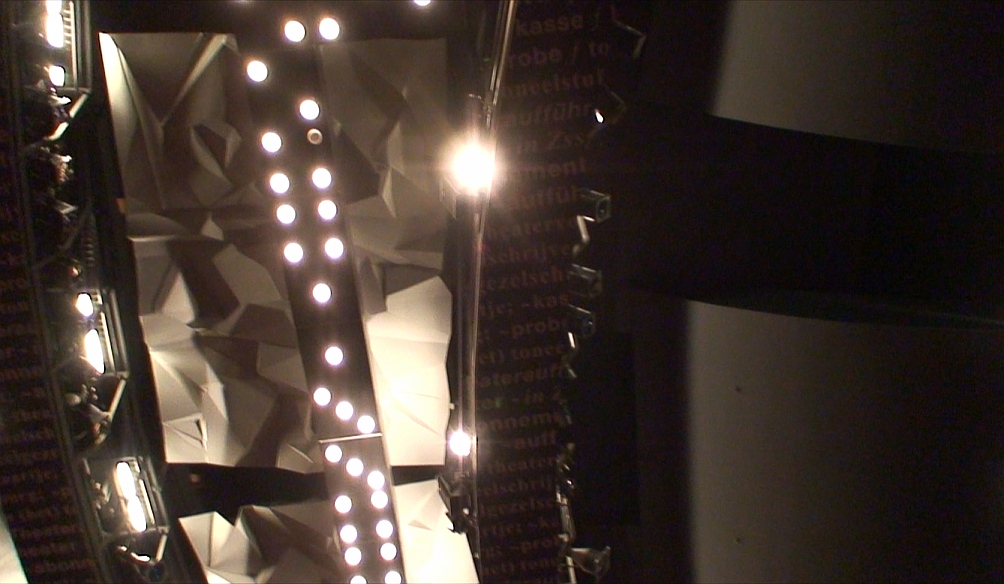
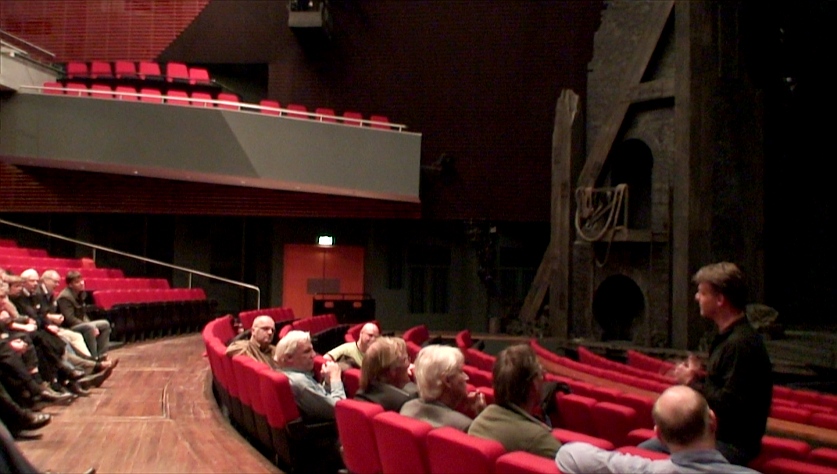
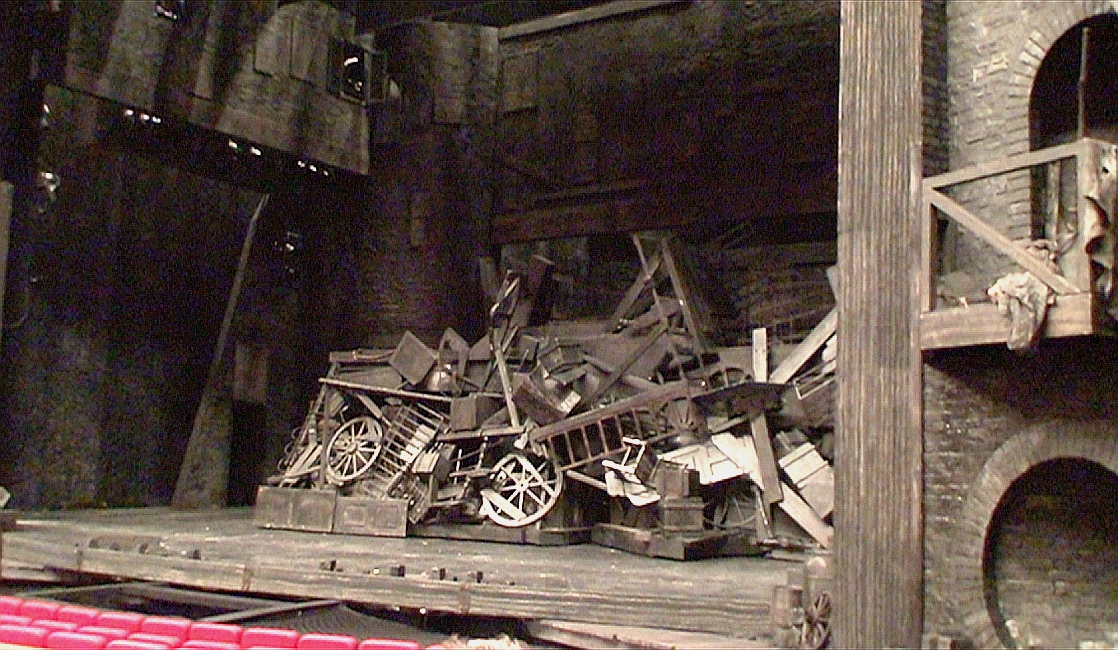
So what audio system would they use, or is that classified? Well, of
course a sizeable amplifier array, and two hanging curved speaker
arrays from the ceiling, two pilars on the side of the stage covered by
cloth. And then over 80 or even more wireless microphones appearently
in mpg format at some point mixed into a big digital mixer where the
idea is to have only one AD/DA stage overall. Then surround speakers
with lexicon PCM91s for effects, and a whole lot of screens and
controles to make sure the channels can be controlled and opened in
time and set so that the point of feedback is approached but not too
close. Of course with so many portable (hair) microphones that
isn´t easy.
A demonstration with 1 microphone on stage worn in the hair of the
speaker was convincing that a degree of realism was achieved. I´d
say the sound was fairly dead-ish but on the other hand pretty good,
even pleasant, power enough, and no obvious added (negative) effects,
and good dynamic range, though maybe a bit forced on the loud side, and
the low (including transients) was quite filtered, I´d say.
If I recall correctly the speaker has made it clear there were no
special feedback killers or more than the (computer) mixers´
processing, which I think is a good idea. I have experience with
amplification of course, going back to primary and highschool, and I
agree that as straight as possible signal path and control over the
feedback with well chosen speaker placement and acoustics is preferable
and more pleasant to listen to, certainly in the long term.
Theo, you run two heavy FFT based Jamin programs in a high quality 24
bit signal path live and you don´t want to use that? Euh, mostly:
no I would not. It sucks too much.
HD computer graphics animations
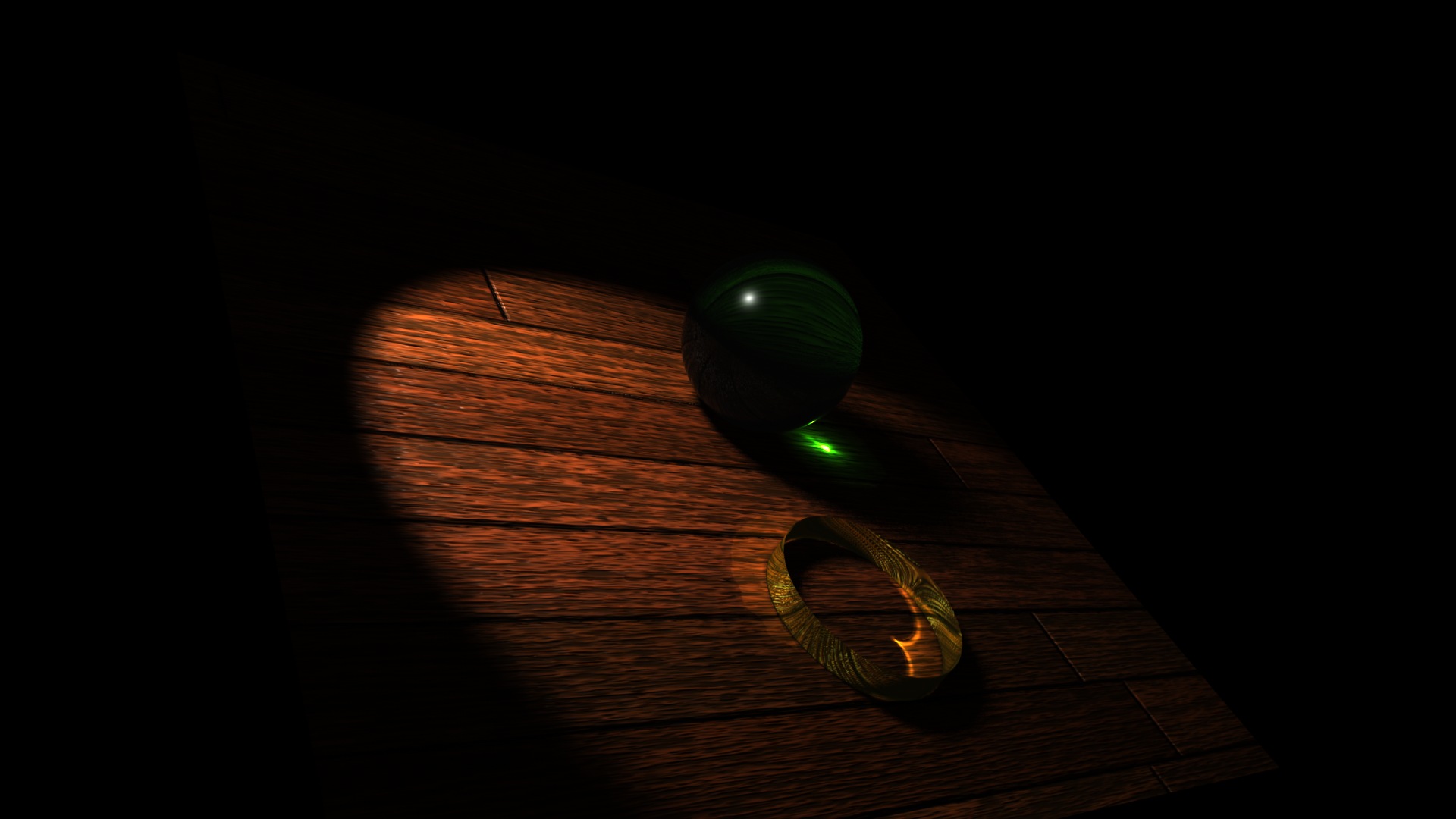
See the Tcl wiki for a page on
this subject.
The animation script is there, too, but not all the header files which
are chunks from the NVidia example .pyg file, where the tcl script puts
transformation commands in between. That´s not great, but it does
work, and the whole think isn´t perfectly great in every way, but
certainly good, and if you want grand looking HD tiff frames this works
well.
I don´t speak gelato text file lingo good enough to be sure about
the function of push/pop-transform and the generalities of transforms
being applied to lights, scene and camera. I can search it out and look
it up I guess, because it would be great to transform the scene, or
parts of it, and make the light reflections change in an animation. I
in this example have a turning spotlight, which already looks great,
and the whole thing stays natural.

James Bryant from Analog Devices gave a lecture, well euhm, seminar
like (but not for university) at Spoerle in Houten (middle of Holland)
about an important subject: OpAmps:
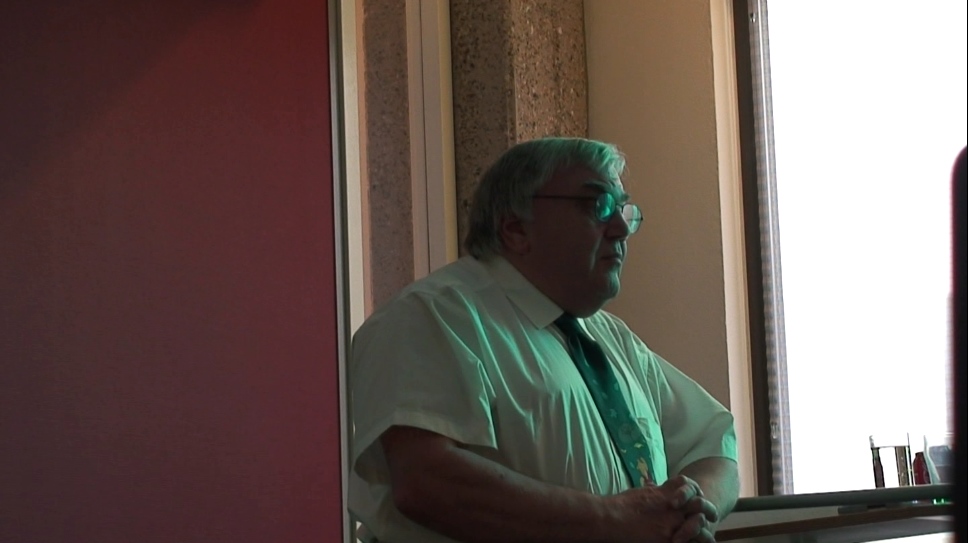
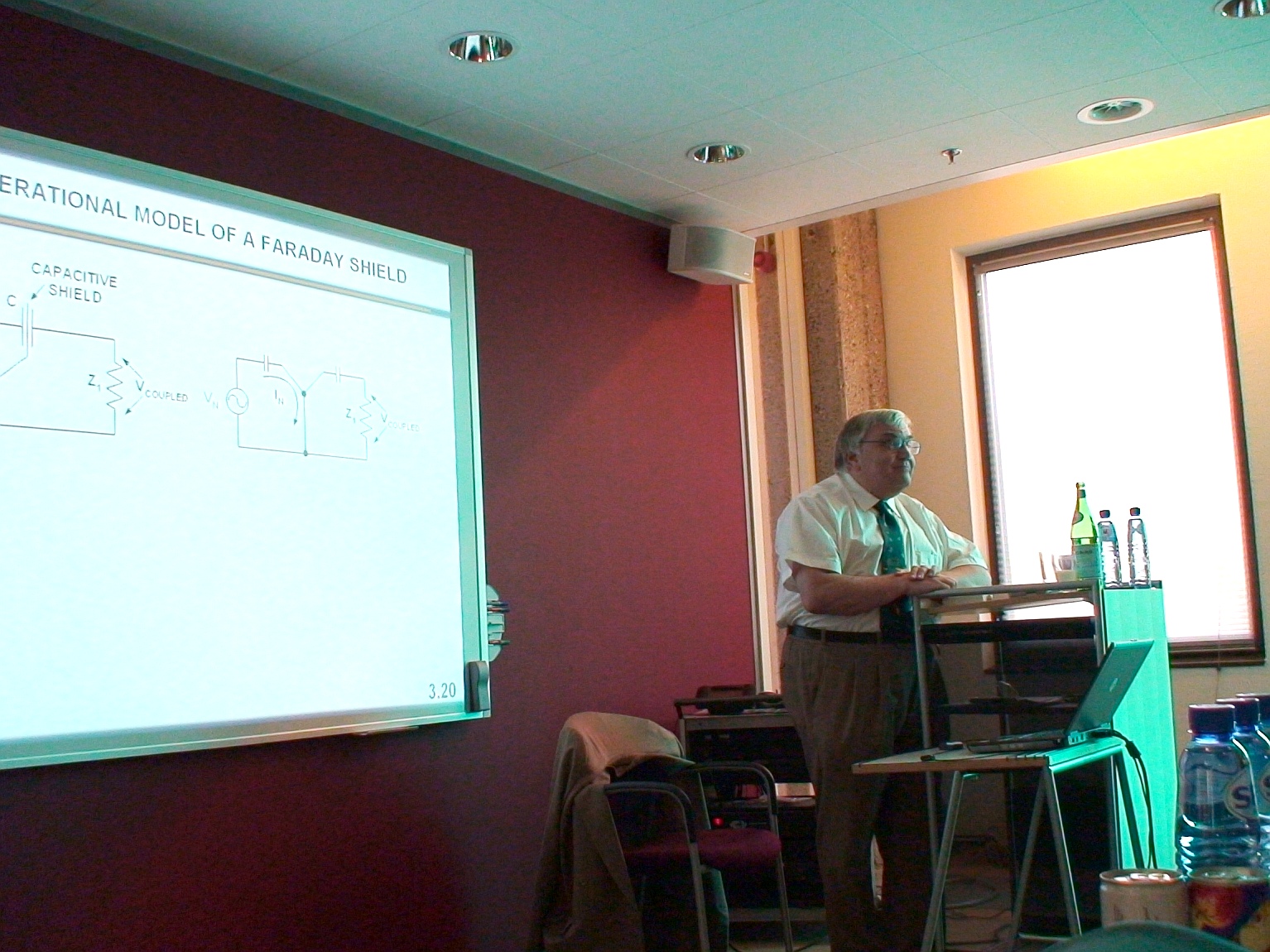
(more pictures 1 2 3 )

From above (the picture with the actual boards and just above: the 4
nodes on one screen), the Texas Instruments wireless connection boards
were presented in a Silica day near Utrecht:
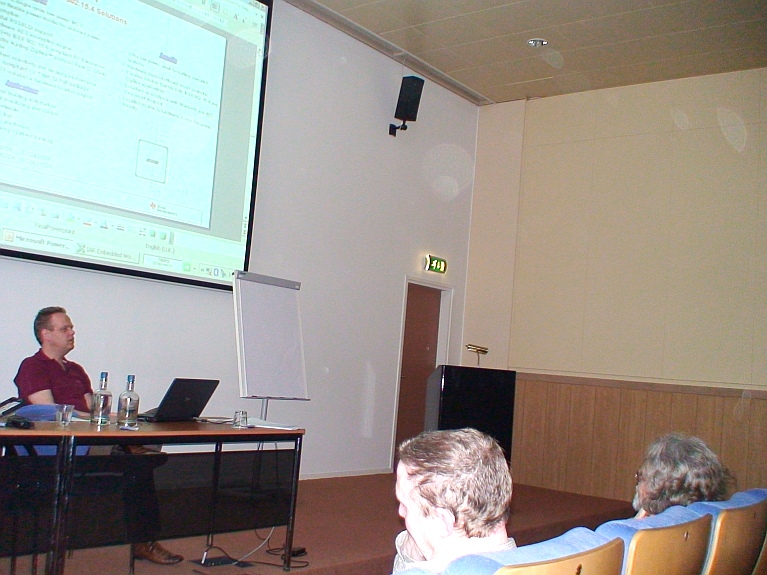
I got another wireless connection kit like I had already bought from Ti
for free.
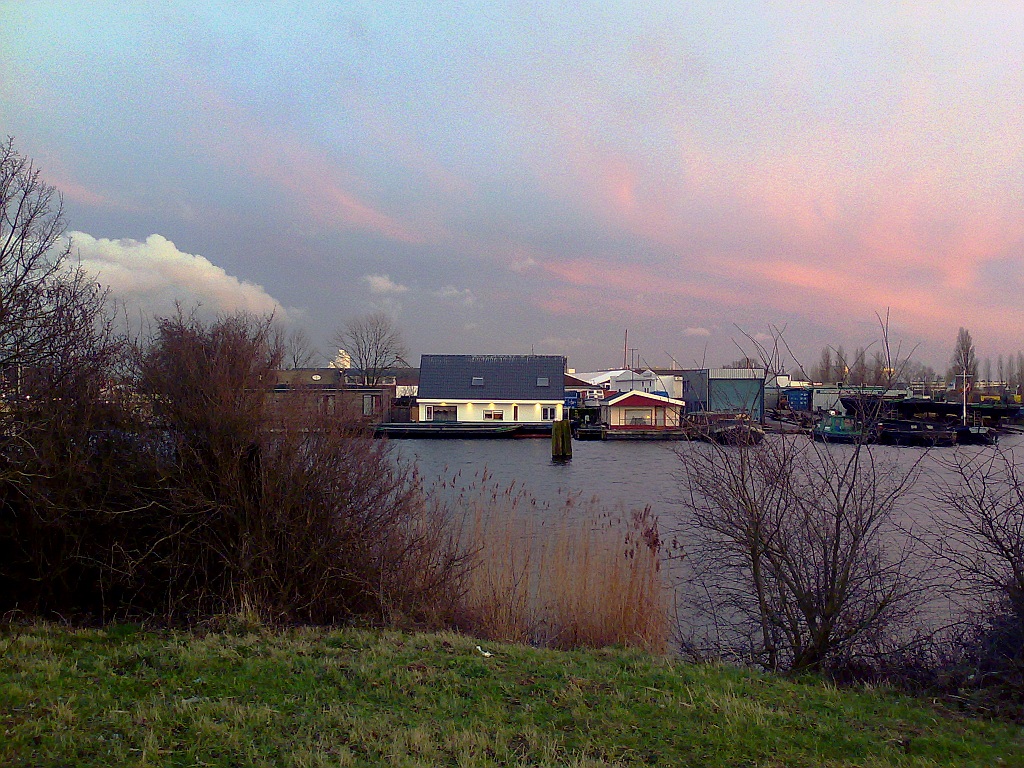
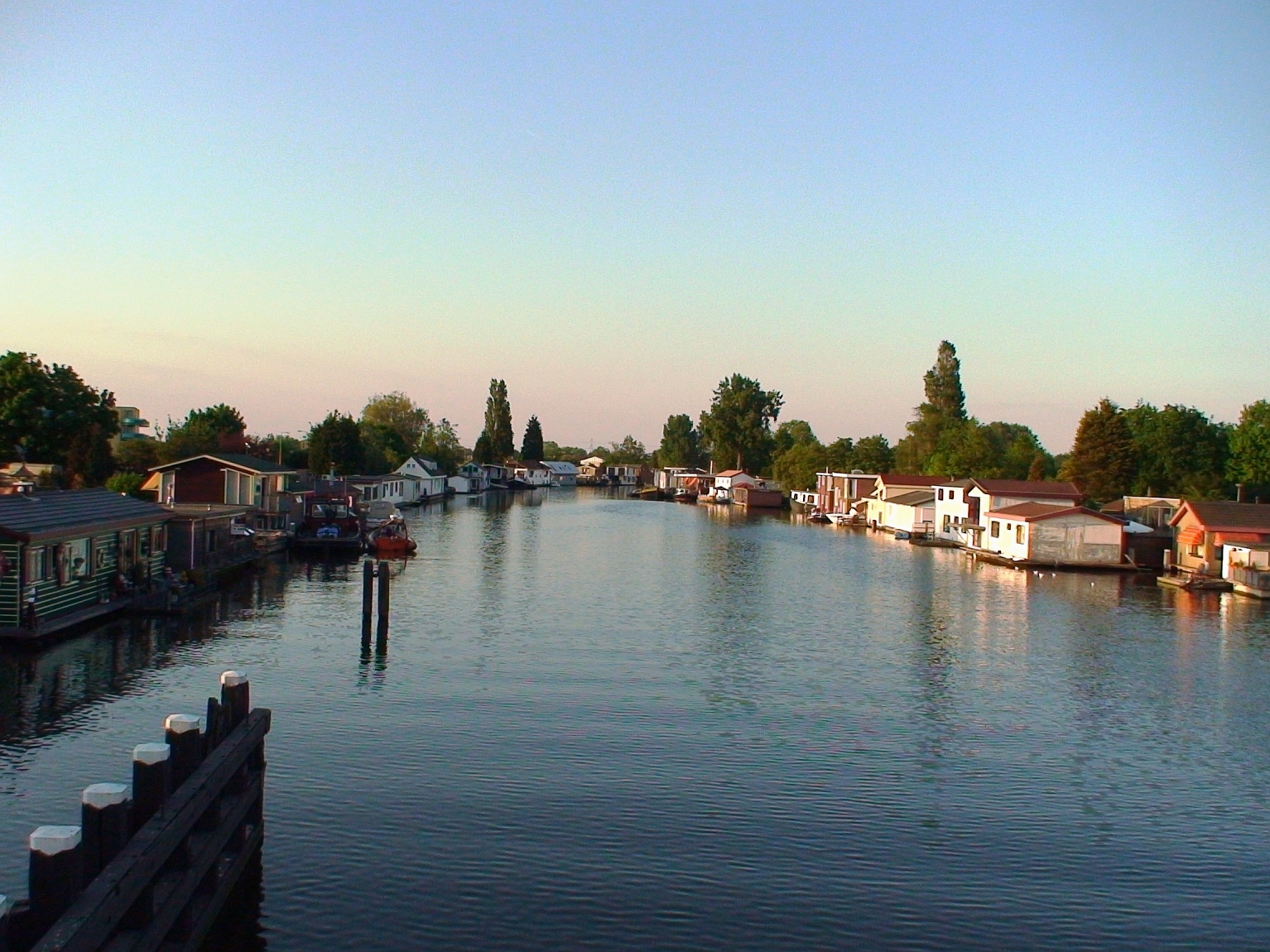
This image may look familiar, I photographed the same place some pages
ago, but this was with another camera.
Ultimate Rock Bands
These people (minus the first frontman who died already quite some time
ago) were probably close to the ultimate rockband when I was in
highschool.
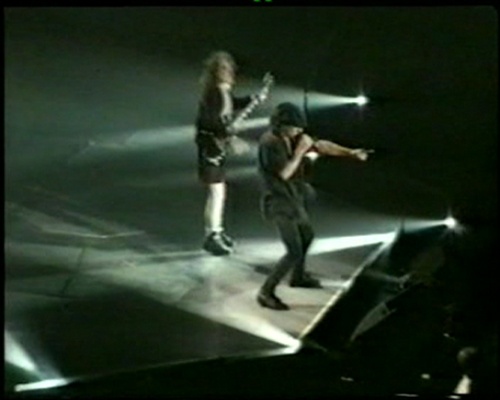
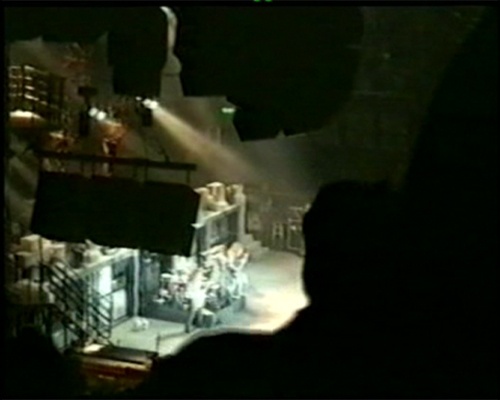
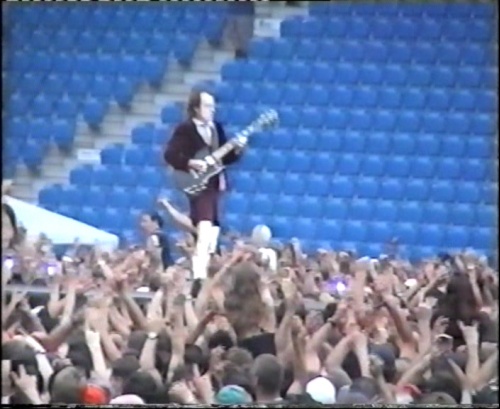
I recall well the pounding basses and heavy rythms (where the word
applies) and extremely musical songs coming from the 500 Watts disco
system which luckily played also this music and Rolling Stones and Kiss
and what have we. Absolutly marvelous, can hardly be played loud enough
on a good or decent sound system. (Maybe a decompressed version Theo?
Sure, probably even better, but impossible with the given video
quality.)
There is a site with videos (basically bootlegs) from concerts, and I
just looked at ´shotdown in flames´. Great band.
Not a rock band but good music which I knew as a kid: Cornelis Vreeswijk
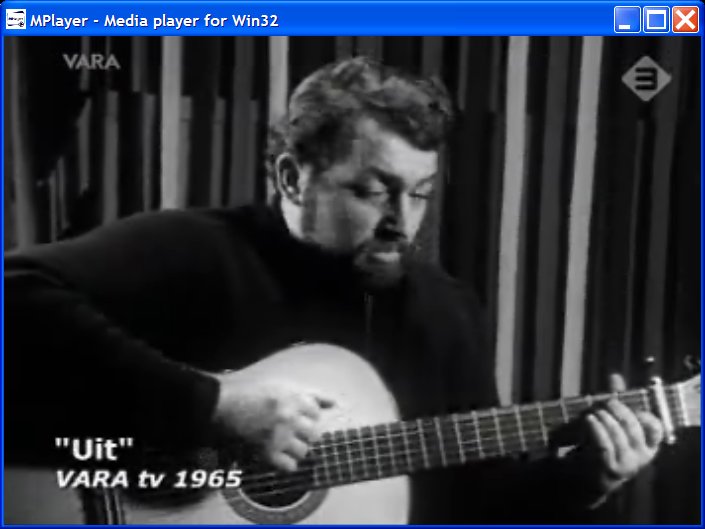
There´s a documentary on the ´missed program´ site of
the dutch television, which I was eventually able to see (and copy for
personal use) on linux.
The EE's scheduler Execute Function
What does that mean? Well, EE means Electrical Engineer, scheduler is
the thing in your computer (in this case) which gives little pieces of
time to various programs (processes) that run on it, like your web
browser, java applets, the operating system updater, etc., and the
execute or fire function is some algorithm put in computer code which
decides which process is going to run and for how long.
So presume we are a traveling salesman for a minute, we would have a
schedule which is simple enough when it has been decided on, we drive
to the next city, do our business, and go again to the next city, until
were idle again, or plan the next move.
If however we are a local manager we will want to keep some track of
all the employees which we in turn give attention to based on some
decision making criterion, like who asks the hardest for it or where
things are most wrong, or maybe following a fixed schedule.
If the entity is a computer, and the attention or schedule deciding
factor is therefore part of a computer program, we could say that we
describe the possible paths for the entity to go as a graph with
connected nodes, and the going from one of the nodes of the graph to
another as a decision which is based on a 'execute' or ' fire' rule.
These aren't perfect comparisons, but lets say the computer has two
programs which it can divide it's attention to, the schedule part of
the kernel of the operating system (already at least since UNIX in the
70s) would at some point decide to fire up as it were either of the two
programs and at some point to bud in again to let the other program run
a while, in this case we'd be talking (hopefully) about time slices of
the order of milliseconds, so the computer appears to carry out tasks
in parallel.
An electrical engineer can assign many tasks to him (or her) self
because the field of EE is still large and contains many possibilities
for working on new and interesting subjects, and so the choice to use
one of those possibilities to work on a subject is usually a choice out
of many. Working on several tasks is of course the same way as with a
computer possible in a time dividing way.
The interesting part is that an EE will chose for a number of tasks
in the way which may correspond to his interests and desires. Like
Steve Jobs wants a small solid state and energy safe sound player
device for when he goes biking in the woods, and so he invents an ipod.
Or, the director of Hewlett Packard (I know CEO) really hates the guts
of some nazi competition guys somewhere and so decides to totally beat
them by making computers which are much faster and cheaper then theirs.
More limitedly: Joe let's call him Frizzle has always been a HAM and
would really like to get this one connection with an over the ocean
radio buddy 3 dB more noise free and works in every area where he
thinks this could work.
More everyday-ish: Mindy Ehe just loves it to play with Ohm's Law
and became a network cable installer for fun.
Well, every year Bill Gates issues a great plan the campagne written
down by the infamous giga hard plan bureau and it's iron guidelines,
and all EEs follow this to the letter to become eternally saved from
pergatory.
Oh no, wrong story line. Sorry, one should never speak the truth in
this microbrave world. Lets go save some woods in LA or so.
Anyhow, especially in electrical engineering, and I can say so, I am
EE, following ones' interest should be and often is normal and a
reasonable walk of life, including the consideration of personal
honour, feelings of a moral kind, promoting normalities and good
citizenship, and being good leaders.
This should work fine in the free world, but where are people still
free, and unscutinized and let in peace with their own ideas, when Big
Money and Big American Pie is at stake and the whole of the world of
electronics. Well ....
And then the satan (who ??!!?!, well, you know..) comes by, wearing
a suit, and starts managing the corporate world, and wallstreet if he
can handle it, until all conservative (weak, unbrave ?!) souls are
convinced that a big planbureau is absolutely necessary to survive, and
of course allows the boys helping just a tiny bit to have fun while
they try to save their soul. Get the picture?




































